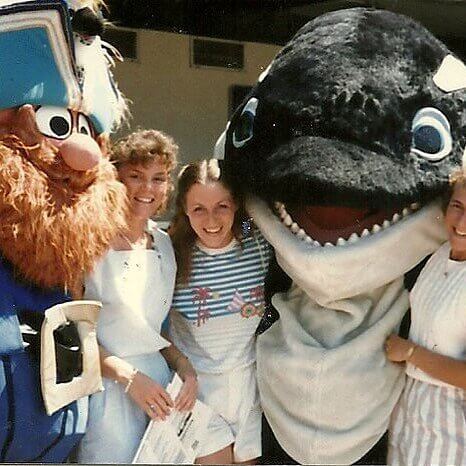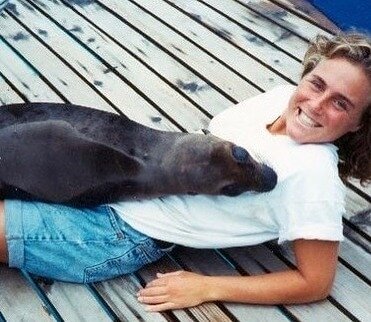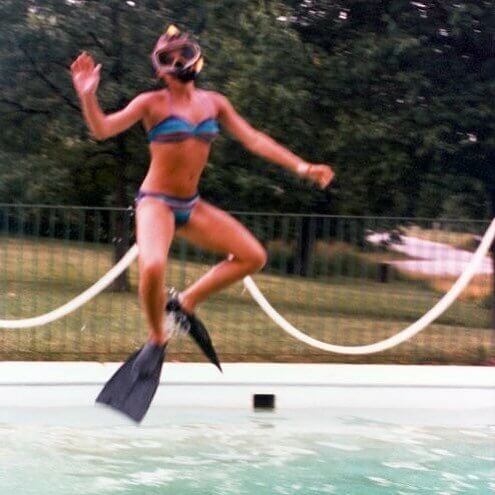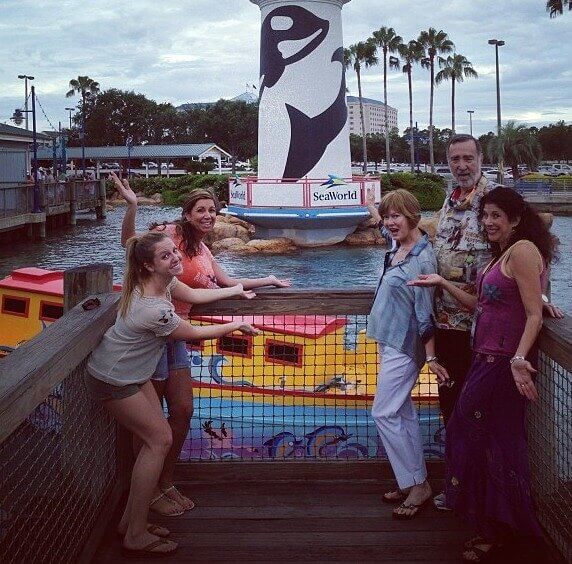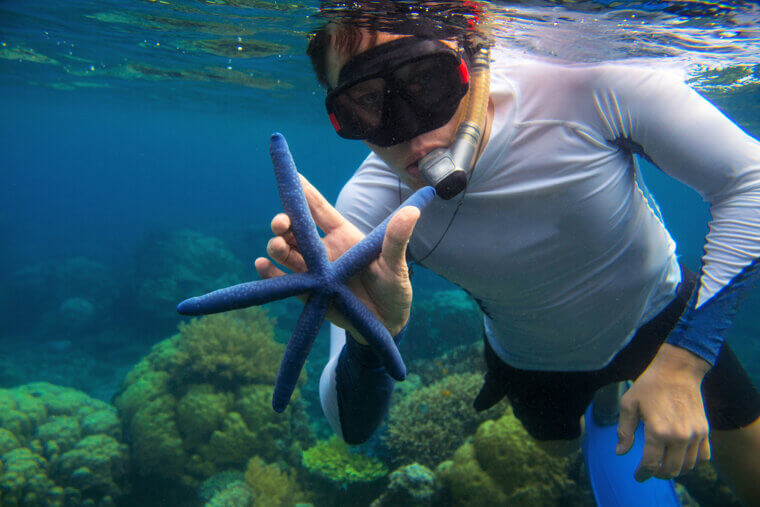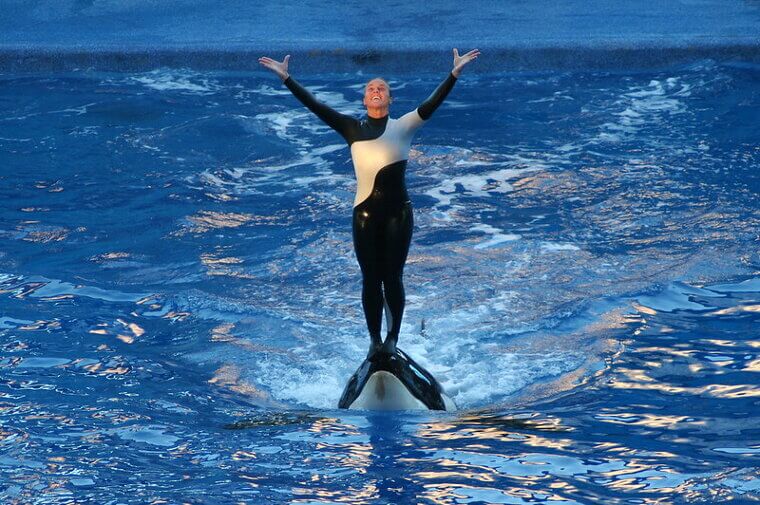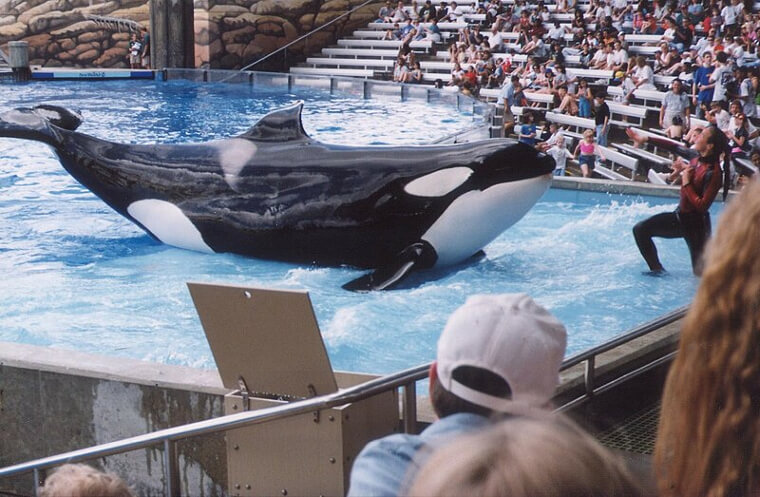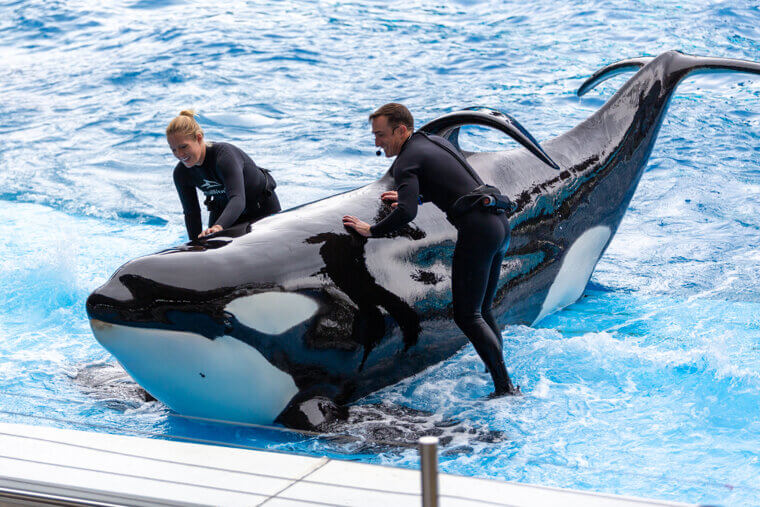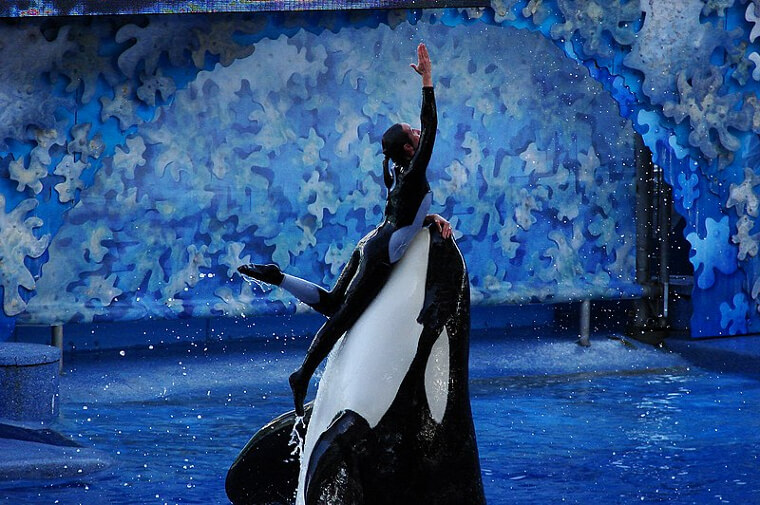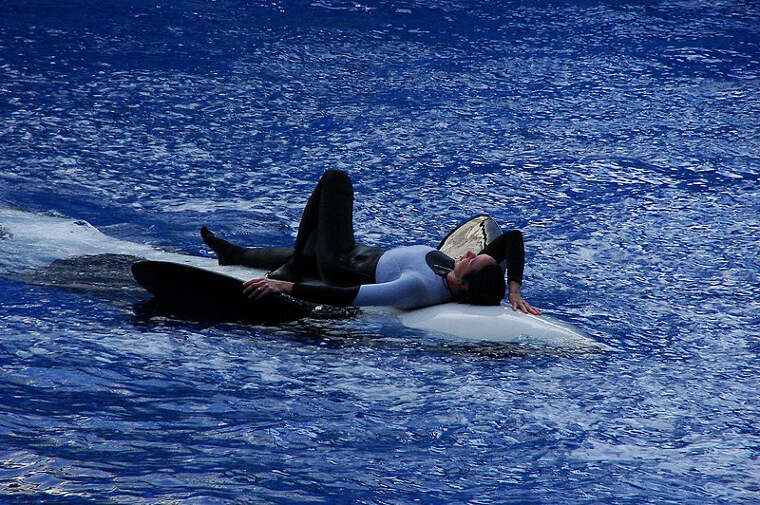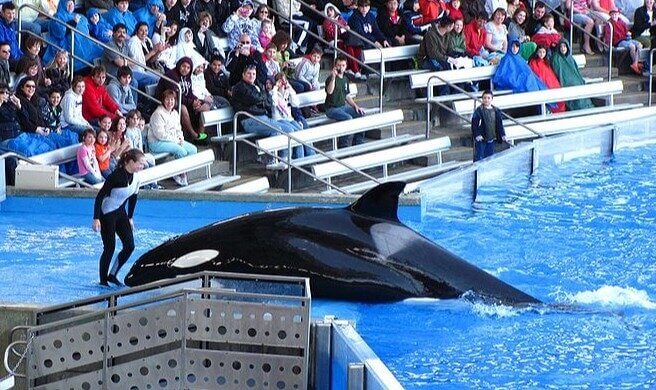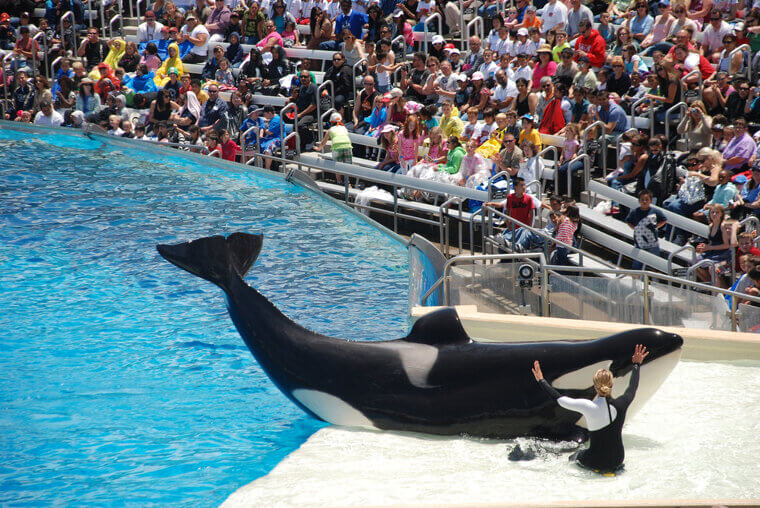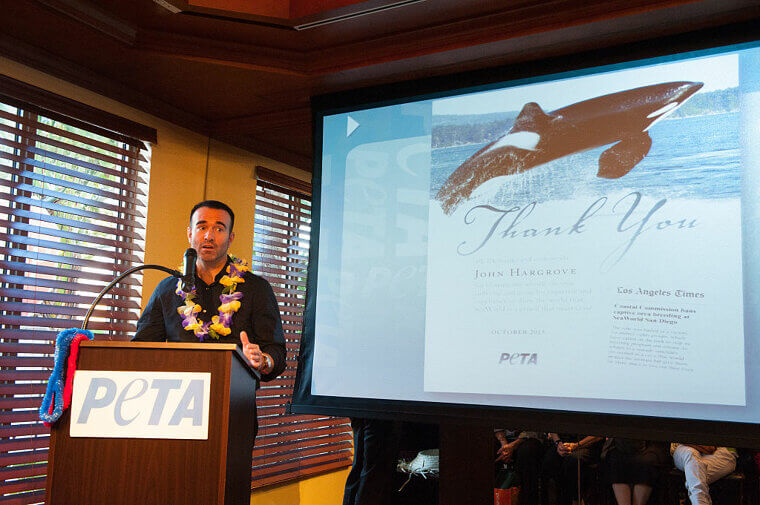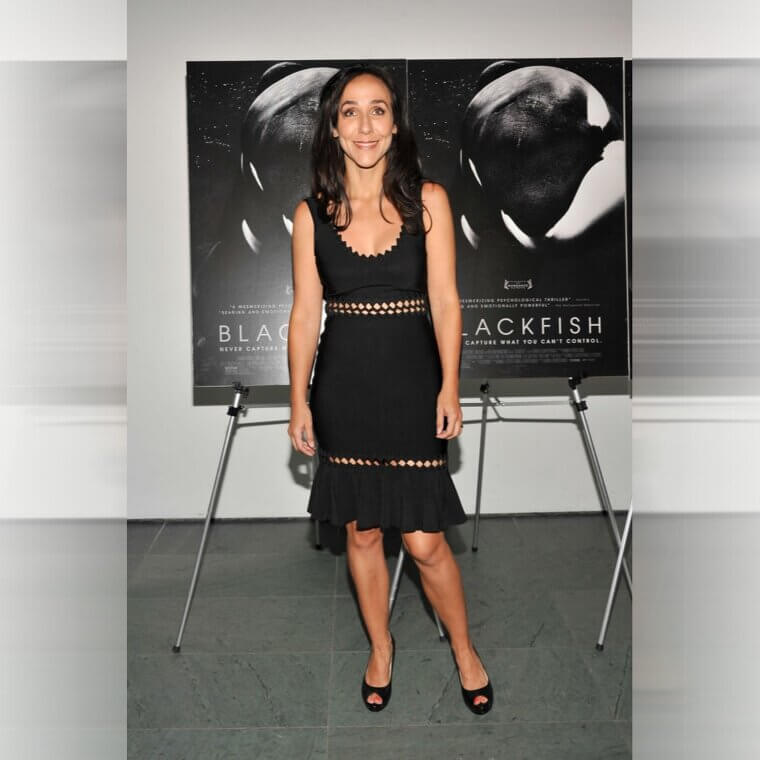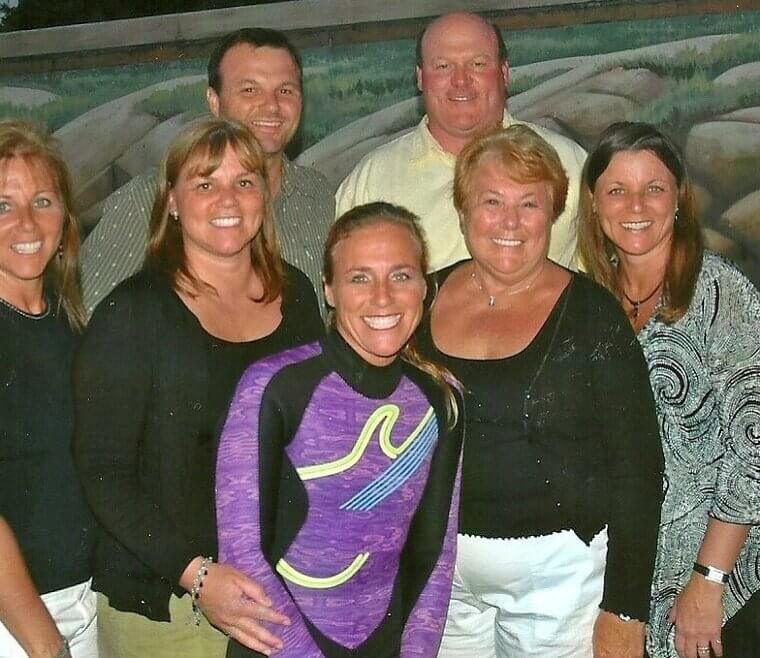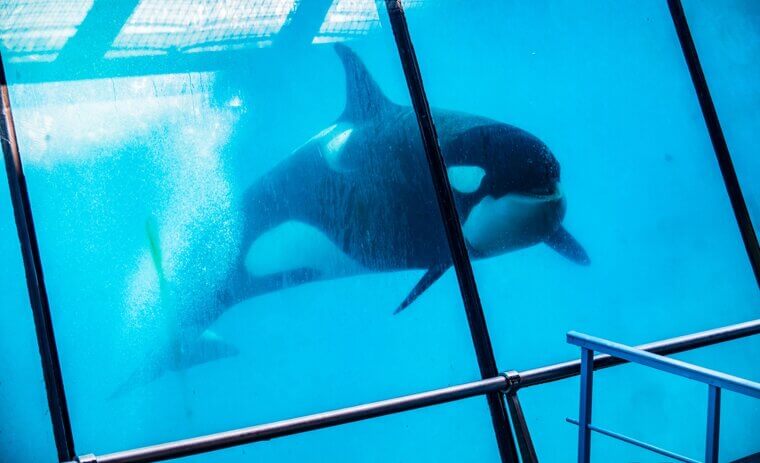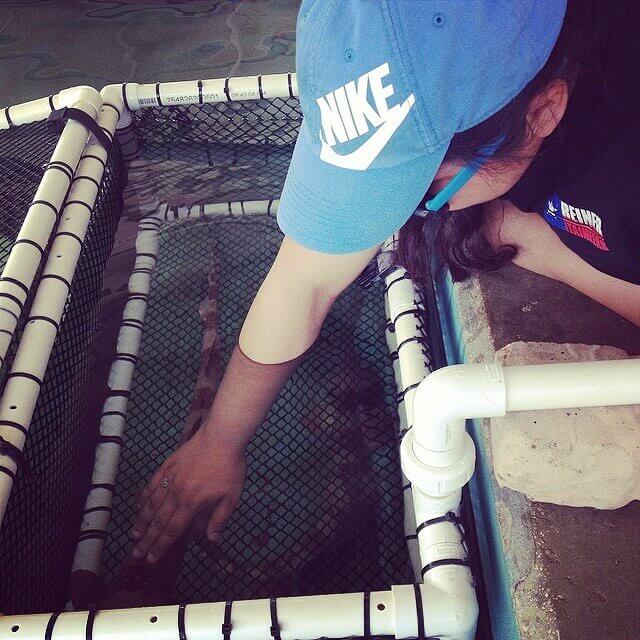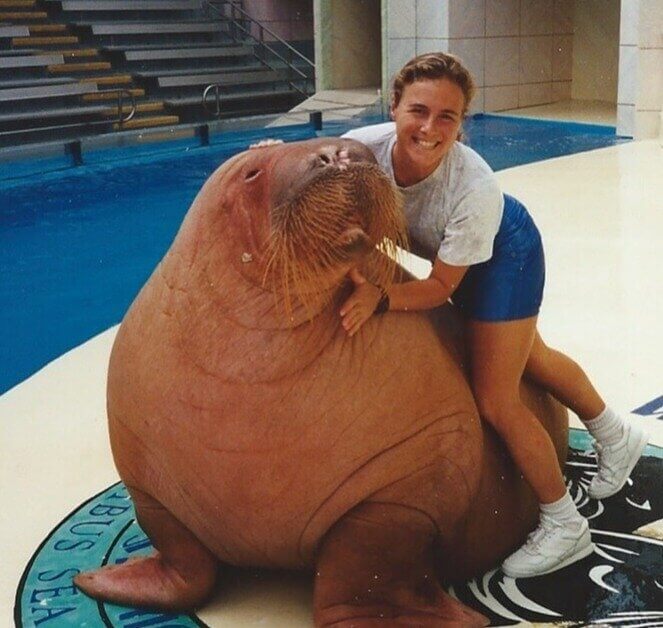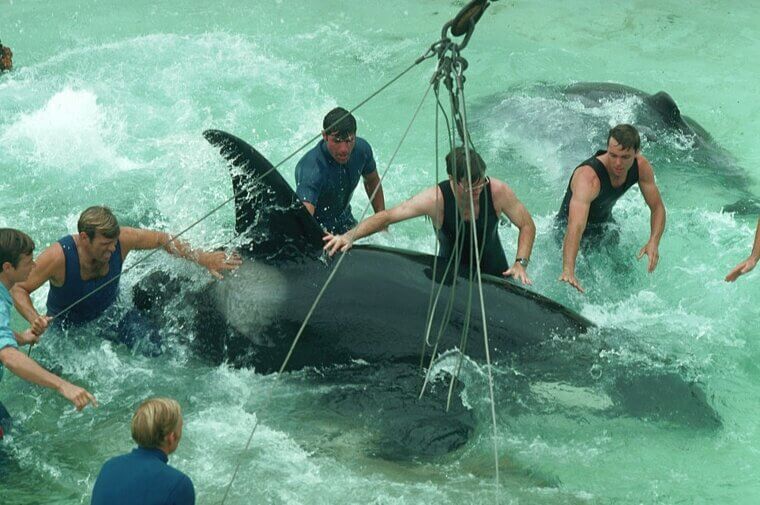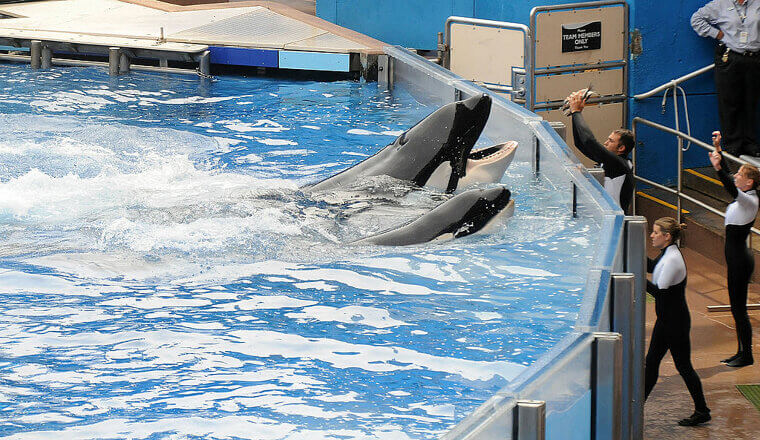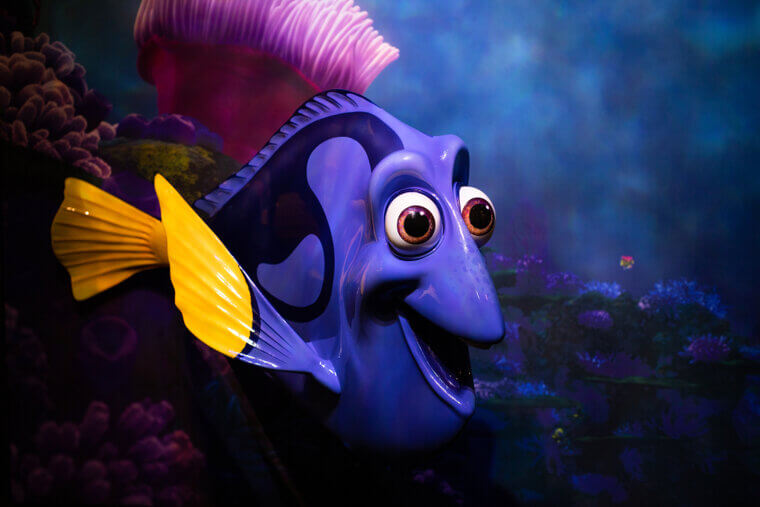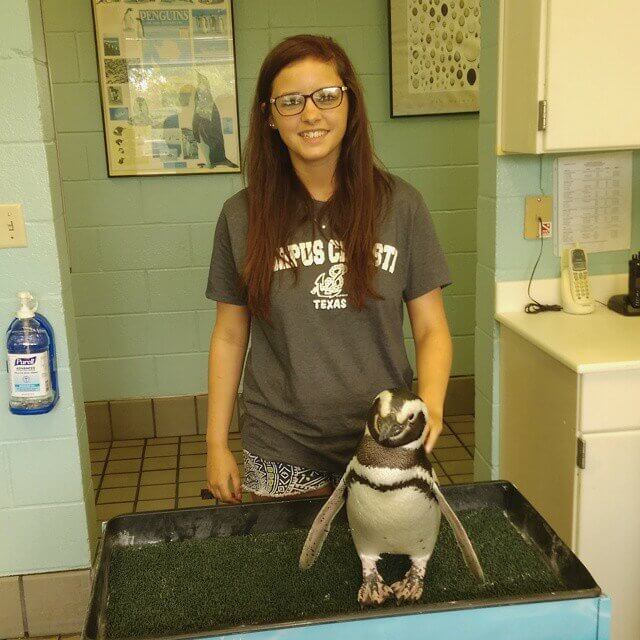This article was originally published on Flamingoof
Brancheau Wanted to Work at SeaWorld Since 9 Years Old
Unlike many of us, Brancheau had a clear idea of what she wanted to do from a very young age. At just 9 years old, during a family holiday to SeaWorld, she was captivated by the marine animal exhibits and decided she wanted to become a marine animal trainer. Brancheau's sister recalled, 'Right there she said, "This is what I want to do,"' upon seeing the killer whale exhibit. Growing up in a quiet town in Indiana, the prospect of working with killer whales opened up an exciting world of possibilities for her.
But as a child, Brancheau had no idea what it would really mean to become an animal trainer. Only time would reveal whether she was truly committed to pursuing this challenging career path.
She Never Lose Sight of Her Dream
It's normal for children to form opinions on what they want to do when they grow up, but for Brancheau, her dream was more than just talk. She actively sought information about the job by speaking with current trainers at SeaWorld, reaching out and inquiring about the career path. She even took the initiative to write a letter to the theme park's human resources department. Realizing the importance of a college degree, she studied animal psychology and behavior to position herself for success as an animal trainer.
After finishing her degree at the University of South Carolina, Brancheau started gaining experience by volunteering at a local animal shelter. Real-world experience was the only thing standing between her and her dream job.
Gaining Enough Experience to Get Her Into SeaWorld
Studying hard for her degree in animal psychology and behavior didn't guarantee Brancheau the job she had dreamed of since she was a kid. SeaWorld wasn't keen on hiring fresh college graduates, so it was important for Brancheau to gain real-world experience. In the early '90s, she got a job at Six Flags Great Adventure in New Jersey, where she got to work with dolphins for the first time.
Not only did she finally start working with marine animals like she had always wanted, but she was also positioning herself to be highly employable for SeaWorld in the future.
Landing a Job at SeaWorld and Climbing the Ranks
After two years of working with dolphins at Six Flags Great Adventure, it was finally time for Brancheau to move on and start working at SeaWorld, just as she had always planned. She joined the animal theme park in 1994 but still had to prove herself further before getting the opportunity to work with the orca whales. Initially, she started by caring for some of the park's other marine animals, such as sea lions and otters.
Despite her new job and added responsibilities, Brancheau never lost sight of her dream to work with orcas, especially as she passed by Shamu Stadium every day on her way to work.
Meeting the Man of Her Dreams at Work
When it rained, it poured for Brancheau. Not only did she secure a position at SeaWorld in 1996, but she also met and married her best friend, Scott. He was an experienced SeaWorld stunt water skier who had been working at the animal park for the last few years and shared the same passion for animals and adventurous spirit as Brancheau. They were a perfect match, and everything seemed to be falling into place for the happy couple.
Sadly, Scott's life was turned upside down when he lost his beloved wife in 2010 after 14 happy years together. The tragic accident came as a shock to everyone.
From New Employee to Poster Girl in No Time
Brancheau's love of animals was evident to everyone at SeaWorld. Having dreamed of working with orcas whales her whole life, she demonstrated a natural connection with sea life that impressed her coworkers. Her infectious enthusiasm quickly caught the attention of SeaWorld's higher-ups, who recognized her potential as one of their key spokespersons and quickly started billing her as one of the poster girls for their brand. In a short space of time, her face was plastered all over the promotional materials.
Brancheau wasn't just becoming a heavy hitter in the staff room at SeaWorld - she was about to become a star in the public eye as well.
Keeping Fit Enough to Keep up With Giant Sea Mammals
Becoming an orca whale animal trainer can be incredibly challenging, especially because it requires exceptional physical health. Exercise and fitness are essential for those pursuing this role, and that was no different for Brancheau. She always had to stay in top shape, which put a lot of physical and emotional strain on her. That being said, Brancheau was willing to push herself to limits to fulfill her lifelong dream.
She engaged in a variety of sports, including cycling and weightlifting, and was a dedicated marathon runner. Brancheau completed her first marathon, the Walt Disney World Marathon, at the age of 25.
Brancheau Knew About the Dangers of the Job
Working with orcas as an animal trainer can be a dangerous business; after all, they're not called killer whales for nothing. Despite all the drawbacks and possible pitfalls, Brancheau was more than willing to embrace everything that came with her profession. She understood she was working with wild sea creatures that needed to be respected as such. It's certainly not a job for everyone, but it was the right job for Brancheau.
In addition to having confidence in her own abilities, Brancheau was reassured by the fact that there had been very few orca attacks on people. If it was truly life-threatening work, surely SeaWorld wouldn't allow it?
Everything Seemed Normal on the Day Brancheau Lost Her Life
For Brancheau, a typical workday consisted of performing with orcas as part of SeaWorld's Dine with Shamu series in Orlando, Florida. The tragedy occurred on February 24, 2010. But when Brancheau clocked in for work that day, she had no idea what was in store for her. Before the show, she prepared just as she would on any other day of the week, conducting her stretches and dressing in scuba gear.
On that fateful day it was, Tilikum, the male orca, who was scheduled to perform as the star of the show alongside marine mammal trainer Brancheau.
Brancheau's Connection to Tilikum the Orca
Brancheau had always had a strong affinity for animals. So when she developed a close bond with one particular orca at SeaWorld, her colleagues weren't surprised. She developed a deep connection with Tilikum, a male orca that had been at the animal park since 1992. It wasn't a one-way street according to one of Brancheau's colleagues - senior trainer at SeaWorld, John Hargrove, stated that he believed Tilikum's feelings for Brancheau were just as strong.
'He had a great relationship with her and she had a great relationship with him,' Hargrove told The Sun. 'I do believe that he loved her and I know that she loved him.'
People Who Were There Can't Agree on What Happened
One of the most puzzling aspects of the tragic event is the lack of consensus among eyewitnesses about what relly went down. Many audience members who had gone to see the show claim that Brancheau was pulled under the water by her arm in the jaws of Tilikum. But those claims are refuted by SeaWorld, who asserts that she was dragged into the water by the ponytail of her hair.
According to SeaWorld, Brancheau was also lying face down when Tilikum grabbed her by the hair. Regardless of what actually transpired, it was evident to everyone that this was not part of the show.
She Suffered Several Serious Injuries Before Resurfacing
SeaWorld had performed this show many times before, which is why no one expected it to take such a dangerous turn so suddenly. When Brancheau was dragged into the water by Tilikum, she suffered several injuries from being thrashed about. These injuries were only fully recognized once she resurfaced. By the time she appeared again, she had fractured her jaw, dislocated joints in her body, severed her spinal cord, and broken her ribs.
One of the most severe injuries that Brancheau suffered during the tragic event was scalping. Unfortunately, the trainer met a fatal end due to the numerous injuries.
SeaWorld's Quick Actions in Response to the Tragedy
Orca trainers undergo extensive training to prevent accidents and ensure the well-being of both people and orcas. These powerful aquatic predators are known to be dangerous, even though they don't typically prey on humans for food. Following the incident, SeaWorld faced significant public backlash for placing Brancheau in such a position, leading to a temporary ban on trainers entering the water with orcas. They needed to reassess what danger they were putting their staff members in.
It was a PR nightmare for the animal park. After all, this tragedy not only resulted in the loss of their poster girl but also occurred in front of a horrified audience.
Tilikum's Dangerous Past Came Back to Haunt Him
According to SeaWorld, they had no idea that Tilikum the whale was so dangerous. However, the history of the animal suggests that he had always displayed aggressive tendencies. While it's not usual for orcas to pose a serious threat to human beings, Tilikum had apparently been involved in more than his fair share of incidents that posed a risk to people. Nineteen years prior to Brancheau's tragic incident, a 20-year-old Canadian animal trainer named Keltie Lee Byrne was involved in an orca attack that tragically took her life as well.
Byrne was working at Sealand of the Pacific when she accidentally slipped into a whale pool. Three whales, including Tilikum, dragged her underwater and refused to let go.
A Third Person Lost Their Life Because of Tilikum
It wasn't just Dawn Brancheau and Keltie Byrne who suffered at the hands of Tilikum. Another individual lost their life when faced with the powerful orca. 27-year-old Daniel Patrick Dukes wasn't supposed to be in the animal enclosure when he jumped in Tilikum's pool after hours, but his body was recovered the next day and found to be severely mutilated. SeaWorld claimed to have no security footage from the night, so the exact events that took place remain a mystery to this day.
What is known about that fateful day in 1999 is that Dukes' body was found without certain body parts, suggesting they had been bitten off sometime during the night.
People Overlooked Tilikum's Violence Due to Daniel Dukes' Circumstances
Unfortunately, the circumstances surrounding Daniel Dukes allowed Tilikum's aggressive tendencies to be dismissed or overlooked. Dukes had been a drifter at the time he entered SeaWorld, where he hid until closing time that night. After his tragic passing, the animal park described Dukes in an unflattering light, claiming that he had bad hygiene and mental health problems. They emphasized his history of petty crime and asserted that staff had observed him attempting to spy on young women earlier that same day.
The media portrayed Dukes more as an intruder than as an innocent victim of Tilikum's actions, which made it easier to overlook the tell-tale signs that Tilikum was a danger to people.
The SeaWorld Orca Who Took a Life Two Months Prior
Tilikum is now infamous for being a dangerous orca responsible for more human deaths than any other orca known. However, not long before the events involving Tilikum and Dawn Brancheau, another alarming orca attack occurred, raising questions about the captivity of these powerful marine animals. Two months prior to Brancheau's incident, Spanish animal trainer Alex Martinez lost his life at a different animal park in the Canary Islands. The SeaWorld-owned orca, Keto, leased to the Tenerife park, pulled Martinez underwater and rammed him in the chest, resulting in his tragic and untimely passing.
SeaWorld claimed this incident was an accident and that his body showed no signs of violence, but an autopsy revealed that the trainer had actually been subjected to intense physical violence which included biting.
Brancheau's Husband Contemplated Taking SeaWorld to Court
Dawn Brancheau wasn't just a beloved daughter to her parents; she was also a wife and a cherished member of her community. Allegedly, Dawn Brancheau's husband, Scott Brancheau, considered taking legal action against the animal park. Chicago-based law firm O'Connor & Nakos announced that they would represent the widow in the wake of the 2010 event. O'Connor & Nakos claims to handle all aspects of personal injury including the wrongful passing away of loved ones.
Despite the announcement by O'Connor & Nakos, it appears that Scott Brancheau had a change of heart, as he never followed through with legal action against SeaWorld.
Controversy Surrounding Brancheau's Ponytail
The animal park allegedly claimed that the incident involving Dawn Brancheau occurred because the animal trainer's hair had been in a ponytail. However, documentary director of Blackfish Gabriela Cowperthwaite argued against such claims, suggesting that this assertion lacked factual support and that "there had to be more to this story." What she discovered instead was that wild-caught orcas, such as Tilikum, act out aggressively towards other orcas and people alike due to the extreme stress of forced captivity.
The documentary used former SeaWorld trainers, eyewitness accounts, and attack footage to highlight the stress Tilikum faced when separated from his family. They also presented evidence of the orca being bullied by other orcas.
A Former SeaWorld Orca Trainer Wanted to Tell the Truth
Three years after the events involving Dawn Brancheau, the documentary Blackfish was released to the public, casting a new perspective on the tragic incident. Former SeaWorld trainer John Hargrove decided to speak out about his experiences working with orcas kept in captivity, stating, 'Those are not your whales. You know, you love them, and you think, I'm the one that touches them, feeds them, keeps them alive, gives them the care that they need. They're not your whales. They own them!'
Hargrove later released a book in which he wrote, 'My job now is to tell the truth... [about] about the horrors that emerged from the corporate exploitation of the whales and trainers.'
The Documentary That Exposed the True Nature of Tilikum
The truth is, Dawn Brancheau wasn't the first person to lose their life at the hands of a captive orca. However, her tragic story sealed the fate of SeaWorld and their orca shows, as the public was outraged not only about the senseless loss of life but also about how an animal park could have let it happen. As a result, in 2013, a documentary called Blackfish was released. This documentary sought to expose the dark underbelly of the controversy surrounding Tilikum, and the issue of keeping orcas in captivity.
Using a variety of sources, including former SeaWorld trainers, the documentary argued that the animal park had been deceiving about the true nature of Tilikum and other orcas held in their captivity.
The Orca Trainers Who Disagreed With the Documentary
While former SeaWorld trainer John Hargrove was willing to speak out in Blackfish, other former trainers who had participated in the documentary were dissatisfied with the final result. Former trainer Bridgette Pirtle felt deceived about the true agenda of the documentary, stating, 'I thought she [director Gabriela Cowperthwaite] was making a movie that was going to be more respectful to the memory of Dawn, more understanding of the unique lives of killer whale trainers, and the unique circumstances under which killer whale training is conducted now... I thought it would provide some sort of closure, create harmony, and it didn’t.'
Another former trainer, Mark Simmons, also participated in the documentary. He later claimed that some of his comments were omitted because they didn't align with the director's viewpoint.
Brancheau's Family Weren't Sure How to Feel About the Film
Some of the orca trainers who participated in the documentary Blackfish claimed that they thought they were contributing to a film that celebrated Dawn Brancheau's life and offered insight into the unique perspective of killer whale trainers. Brancheau's own family also had mixed feelings about the final product of the film. While they were pleased that the documentary raised awareness of the tragic events, they felt that there might have been too much focus on the orcas and not enough on the loss of life.
The Brancheau family later released a statement, asserting that 'Dawn would not have remained a trainer at SeaWorld for 15 years if she felt that the whales were not well cared for.'
The Public Advocated for the Release of the Orcas
The negative attention SeaWorld received due to the documentary Blackfish proved too much to recover from in many ways. The public was outraged at the captivity of orcas born in the wild and demanded action that would lead to improvement of the orcas' quality of life. Many people began to advocate for releasing captive orcas back into the wild in which they came from, believing that these powerful marine animals shouldn't be kept in enclosures and forced to perform.
This posed a greater threat to SeaWorld than the closure of shows involving orcas and people, as it would ultimately lead to the return of their most prized marine mammals altogether.
Attempting to Enforce the Release of Captive Orcas Through Legislation
To ban the captivity of orca whales born in the wild, a legal process was necessary. Many had believed that captive orcas should be released back into the wild for years before 2010, but the Dawn Brancheau incident significantly raised awareness for the cause like never before. But it wasn't going to be easy to change through legislation, especially considering SeaWorld's claim that they hadn't captured a wild orca for the past 35 years.
Despite the drop in attendance following the Dawn Brancheau incident and the release of the Blackfish documentary, people continued to visit the various SeaWorld animal parks around the world.
Closing the Killer Whale Breeding Program for Good
SeaWorld hadn't captured orcas in 35 year because they had subjected their whales to a breeding program. Tilikum the whale had himself sired 21 orca calves throughout his 35 year lifespan. But in 2016, those who campaigned on behalf of orcas were met with some positive news. SeaWorld announced that they were going to shut down their breeding program for orcas, choosing instead to let them live out the rest of their lives at the animal park without producing offspring.
The end of the killer whale breeding program would ensure that 'the orcas in our care are the last generation at our park,' they stated on their website.
SeaWorld Announced That They Were Ending Orca Shows Entirely
The live orca shows at SeaWorld were a significant source of revenue for the animal park. After the Dawn Brancheau incident, SeaWorld immediately halted trainers from entering the water with killer whales for performances. However, it took a few years before they announced that they would be ceasing the orca shows entirely. Following the backlash from the Blackfish documentary, SeaWorld recognized the need to discontinue these theatrical performances in order to satisfy the public.
The animal park was not going to stop the shows immediately; instead, they would slowly phase out the shows and replace them with 'new, inspiring, natural orca encounters.'
Rededicating Themselves to Animal Conservation
Following the closure of orca shows and their replacement with 'natural orca encounters,' SeaWorld stated that they would instead focus 'on orca enrichment, exercise, and overall health.' It seemed as though the animal park was taking measures to significantly improve the quality of life for the orcas in their captivity, demonstrating the business's ability to evolve with the times. That being said, not everyone was convinced that SeaWorld was doing enough.
Regardless of whether enough steps were being taken, it appeared that the documentary resulting from the Dawn Brancheau incident had a significant impact on SeaWorld.
Animal Organizations Continued to Campaign
Huge strides were made to ensure that the living conditions of orcas in captivity at SeaWorld were greatly improved. But the problems didn't start or end there, according to several animal rights organizations. People for the Ethical Treatment of Animals (PETA) were particularly vocal about the treatment of animals at SeaWorld, calling attention to a number of sharks in captivity that had lost their lives at the animal park over the years.
PETA also highlighted the case of a polar bear named Szenja at SeaWorld San Diego, who passed away shortly after being separated from her companion of 20 years, another polar bear named Snowflake.
The Dawn Brancheau Foundation Seeks to Continue the Trainer's Legacy
After Dawn Brancheau's passing, her family decided to honor her by establishing the Dawn Brancheau Foundation. The foundation is 'dedicated to improving the lives of children and animals in need, inspiring others to follow their dreams, and promoting the importance of community service,' as written on their website. Following the events of 2010, they committed to continuing Brancheau's legacy of making the world a better place for animals and people alike.
The creation of the Dawn Brancheau Foundation couldn't bring their daughter back, but it could try to bring some positivity out of the tragic event.
It Wasn't Easy to Ban the Orca Shows
Putting a stop to the orca show at SeaWorld proved challenging. While members of the public outraged by the event welcomed the ban on trainers getting in the water with orcas, higher-ups at the animal park were resistant to the change. These shows had been a major staple for the brand and a star attraction for several years. Banning the show effectively led to a drastic reduction in sales.
The events that transpired with Brancheau already discouraged members of the public from visiting SeaWorld's animal theme parks and significantly hurt the finances of the business.
OSHA Had Been on Their Case for Years
SeaWorld had been cautioned about the dangers of their orca shows numerous times before. The Occupational Safety and Health Administration (OSHA) is said to have been applying pressure to the animal theme park for several years prior to the incident, advocating for stricter safety protocols for workers and even taking them to court over the matter. It was only after the new ban that OSHA saw some measures put into place.
According to OSHA, SeaWorld needed to do more to protect the trainers they employ, comparing Brancheau's dangerous line of work to that of bull riding.
SeaWorld Faced More Than One Fine for the Incident
After the tragedy that claimed Brancheau's life, SeaWorld faced additional challenges. The Occupational Safety and Health Administration (OSHA) filed a case against SeaWorld, stating that the animal park should have done more to protect Brancheau, and fined them $70,000. SeaWorld appealed, but it did little to restore its reputation. OSHA claimed that SeaWorld had displayed a 'willful' disregard for safety protocols, especially given the six-ton whale's 'known aggressive tendencies.'
At the time, SeaWorld spokesman Fred Jacobs said in a statement addressing the assertions that, 'SeaWorld disagrees with the unfounded allegations made by OSHA today.'
SeaWorld Convinced Iceland to Hand Tilikum Over to Them
The incident involving Keltie Lee Byrne led Sealand of the Pacific to sell all of its orcas in the wake of the tragedy, eventually resulting in its closure. The former animal park sold all of its orcas to SeaWorld. However, acquiring Tilikum required SeaWorld to seek approval from the National Marine Fisheries Service. Originally, Tilikum was intended to be released into the Icelandic sea, where he came from, but SeaWorld allegedly claimed that his release would negatively impact fisheries.
SeaWorld presented a convincing argument and successfully secured Tilikum as their own. The Minister of Fisheries agreed to hand Tilikum over to them, believing that the orca would pose a threat to its natural habitat.
According to SeaWorld, the Documentary Didn't Impact Attendance
It's not clear whether SeaWorld faced a significant drop in sales due to the documentary Blackfish, as they claimed they were unable to attribute an impact on attendance to the film. The animal park did, however, experience a sharp decline in attendance of around 9% following the 2013 film release, but they attributed it to other factors. According to SeaWorld, factors such as bad weather, holiday seasons, and a hike in prices were responsible for the lower attendance.
At the same time, SeaWorld also experienced a drop in its stock price, falling by 6.5 percent. It seemed as though the animal park was facing many challenges following the documentary release.
SeaWorld Had a Lot to Say About Blackfish
After the release of Blackfish in 2013, SeaWorld strongly criticized the documentary by creating a 32-page document listing 69 reasons why they considered it 'misleading and/or inaccurate'. According to the animal park, the documentary omitted crucial information to portray SeaWorld in a negative light. SeaWorld emphasized their role in conservation and scientific research, claiming to donate millions of dollars annually to these causes. However, organizations such as the Oceanic Preservation Society and marine scientist Debbie Giles disputed these claims, stating that SeaWorld's assertions were simply not accurate.
After the documentary's release, SeaWorld's spokesperson stated, 'We can attribute no attendance impact at all to the movie,' attributing the 9% drop in attendance to factors such as weather and higher prices.
Blackfish Had a Massive Impact on the Entertainment Industry
Gabriela Cowperthwaite's Blackfish had a broader impact than affecting the orca shows at SeaWorld. It even influenced the portrayal and storylines of major Hollywood productions. In the 2016 movie Finding Dory, director Andrew Stanton consulted with Cowperthwaite during the making of the animated film to ensure that the depiction of the animal park would align with the public's perception of the facilities. So too did the documentary affect the 2015 movie Paper Towns.
In Paper Towns, some scenes were originally planned to be shot at SeaWorld, but the director decided to change the location because it no longer felt like an innocent setting.
SeaWorld Was in Damage Control Mode
After the release of Blackfish in 2013, SeaWorld went into damage control mode to salvage its business reputation. The tragic events involving Dawn Brancheau, along with other incidents related to Tilikum, thrust the animal park into negative public scrutiny. Consequently, SeaWorld added a 'Truth About Blackfish' page to their website to refute claims made by the documentary. They also filed a complaint against an officer at the Occupational Safety and Health Administration (OSHA).
SeaWorld also encouraged their staff members to participate in an internal company poll on whether the documentary had changed their perception of the animal park.
Her Love of Animals Saw Her Adopt Two Rescue Dogs
Brancheau's love for animals extended beyond marine creatures; she cherished animals of all kinds. This is evident in her decision to adopt two stray chocolate Labradors named Ruger and Maggi, as well as her ongoing practice of adopting various stray animals over the years. In addition to her beloved dogs, she welcomed ducks, chickens, rabbits, and small birds into her family, essentially creating her very own little menagerie of creatures.
Brancheau loved animals so much that she didn't just want to study and work with them; she wanted them around her 24/7. Fortunately, she seemed to have a natural knack for communicating with them.
It's Still Difficult for Brancheau's Family Over a Decade Later
Brancheau's family endured great heartache following the 2010 event. They sought privacy to mourn their loss away from the public eye. Only in 2021 did Brancheau's sister, Debbie Frogameni, speak to The Sun, many years after the incident, providing an update on how the family was coping. 'Some days, I think we are still processing her loss,' she revealed, adding, 'Dawn was just so special to so many people, and I'm not sure you ever get past losing someone like her.'
Frogameni emphasized, 'We do find some comfort knowing that she accomplished and experienced more in her short 40 years than most people who live long lives,' highlighting Brancheau's significant achievements.

